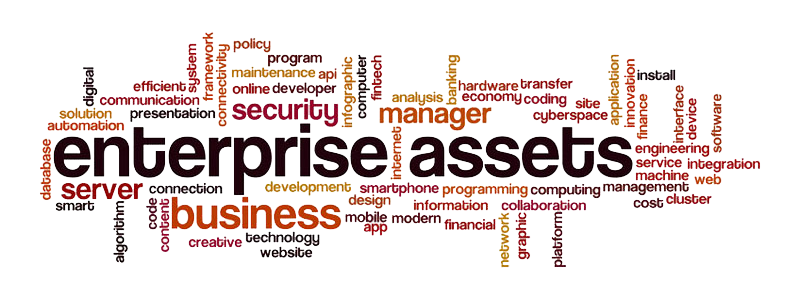SoftRoots Enterprise Solutions
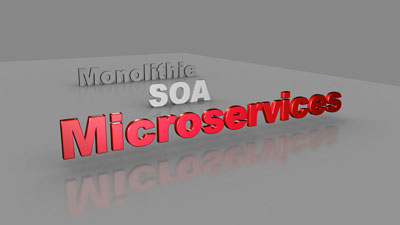 Architecture
Architecture
Enterprise Solutions from SoftRoots are based on an Open Architecture Computing Environment, which utilizes an enterprise-wide Service Oriented Architecture (SOA) strategy to software development taking advantage of reusable components and services. The SOA approach provides loose coupling and minimizes the need for an application to understand the integration and implementation aspects to use the service.
Similar to SOA, microservices architectures are made up of loosely coupled, reusable, and specialized components. However, rather than being adopted enterprise-wide, microservices are typically used to build individual applications in a way that makes them more agile, scalable, and resilient.
As enterprise architectures continue to support a wider array of business applications, data, as well as support for integrated workflow processes and legacy applications today; microservices can complement enterprise capabilities and enable people to work more efficiency together, whether in a single facility or in a globally distributed organization, while providing streamlined management of their business operations.
An Enterprise Architecture may support middleware that can include a host of features (e.g., service bus, security, messaging, application server, data services, governance, etc.), which can also complement and/or extend an overall enterprise architecture. Additionally, cloud middleware may be supported, and provide cloud-hosting services (public, private, and/or hybrid) for support of specific applications. Enterprise Solutions can provide a practical and cost-effective environment to support business needs today, while providing a flexible architecture to accommodate the business needs of tomorrow.
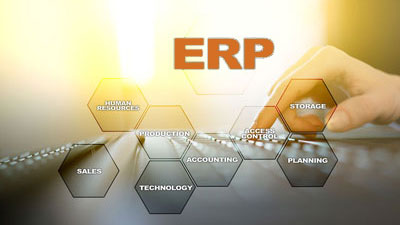 Data
Data
The organized structure of enterprise data is a key factor in obtaining a practical and resourceful enterprise solution. Enterprise Resource Planning (ERP) refers to software and systems used to plan and manage all the core business applications, supply chains, manufacturing, services, financial and other processes of an organization. Enterprise Resource Planning software can be used to automate and simplify individual activities across a business or organization, such as operations, accounting and procurement, project management, customer relationship management, risk management, compliance, and supply chain operations.
Data plays a key role in implementing any kind enterprise solution. The design and development of that solution generally includes various information systems and data schemas to support an enterprise system that can provide a controlled environment for managing, securing, and delivering corporate data within the enterprise environment. Also integral when establishing a controlled data environment, are the allowable data permissions (e.g., view, update, delete) and constraints (e.g., types, ranges, values) placed on data, which are to be enforced throughout the enterprise environment. Additionally, data security controls will play a vital role to support data integration, services, and exchanges with an enterprise solution.
Enterprise-wide data is a valuable asset, and being able to more-fully utilize it with secure and efficient processes within an enterprise environment provides corporate leverage to make informed business decisions. One of the biggest challenges facing large organizations is capturing the organization's true data landscape. Knowing what data exists, how is it generated, where is it stored, who manages it, and how can it be used. Access to enterprise data can help to address these concerns and pave the way for organizations to more-effectively utilize its valuable data.
 Security
Security
In today's open-system Internet environment, it's becoming vitally important to effectively secure an enterprise environment. The capability to gain unauthorized access to an inadequately secured networked environment is becoming increasingly common in today's world. Even a simple workstation, having seemingly non-sensitive information, can become the "weak-link" in a networked environment in which a security breach can occur. Secure information about the hardware, software, network connections, authentication procedures, etc. can be discovered and used to gain unauthorized access into a system environment. Thus, it's crucial to have an effective cyber security infrastructure that can support an overarching security protection program for the enterprise environment.
Cyber security can be described as the collective methods, technologies, and processes, which when working together can help protect the confidentiality, integrity, and availability of computer systems, networks and data, against cyber-attacks or unauthorized access. The main purpose of cyber security is to protect all organizational assets from both external and internal threats as well as disruptions or downtime that can result or are caused by natural disasters. In enterprise enviroments, this generally requires coordinated initiatives across all information systems. These include such areas as: application security, identity management, data security, network security, mobile security, cloud security, and disaster recovery planning.
Given the rapidly evolving technological landscape and the fast pace at which technologies and software is adopted across various Industry sectors such as: finance, government, retail, hospitals, education, energy and others, more and more information is becoming digital and accessible through wireless and wired digital communication networks and across the ubiquitous internet. All this highly sensitive information is of a great value to criminals and hackers, which is why compliance to current Industry Standards for security is critical to protecting assets, along with using strong cyber security measures and processes within an enterprise environment.
 Analytics
Analytics
Analytics provides a means for organizations to evaluate patterns in data through systematic computations enabling increased understanding of the data, while providing a quantifiable basis for business intelligence and decisions. Analytics includes the discovery, interpretation, application, and communication of data patterns to support business process improvement, as well as post-mortem and predictive data analytics.
Analytics include the techniques and processes being exercised against raw data for making inferences and conclusions of the data. Data analytics encompass a wide-variety of techniques that support the following four basic types of data analytics; diagnostic, descriptive, prescriptive, and predictive analytics.
Challenges do exist when analytics are being applied to large data sets that are constantly changing. On-line transactional data is one such example, which may require complex machine analysis of Big Data for meaningful evaluations. Another challenge is the systematic analysis of unstructured data. Unstructured data differs from structured data in that its format varies widely, and cannot be stored in traditional relational databases.
Organizations can utilize analytics to make better business decisions, analyze customer and consumer trends, as well as product and service metrics. Additionally, data analytics can help identify process improvements to existing business operations, as well as identify new and/or improved products and services for the market.
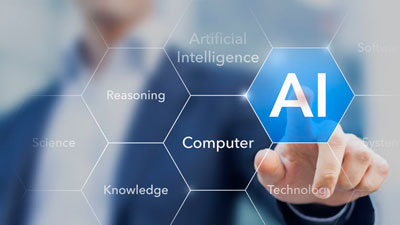 Artificial Intelligence
Artificial Intelligence
Artificial Intelligence or simply AI provides a good way of either driving or even replacing the lower-level, repetitive tasks. Businesses often achieve the greatest performance improvements with AI when humans and machines work together. To make the most of this powerful technology, one needs to consider AI as a means of augmenting rather than replacing human capabilities.
The Industrial Internet of Things (IIoT) is a subset of the Internet of Things (IoT) aimed especially at industrial applications. It refers to a network of physical objects, that are equipped with connected technologies such as sensors and radio frequency identification (RFID). These can and do optimize themselves based on AI processes and collected performance data. In fact, Industry 4.0 is fuelled by the developments in automation, robotics and the IIoT. These technologies, alongside cloud and data analytics, are forming the building blocks of the next industrial revolution.
Simply put these technologies enable you to get the information you need to make the best decisions for your business. The benefits from this kind of digital transformation allows a business to optimise their processes and deliver more products and services in less time and with less resources. Additional benefits also include cost savings, increased profitability, reduced downtime, real-time forcasting and monitoring, improved product quality, and better compliance with current Industry Standards and regulations to name a few.
 Integration
Integration
When it comes to the integration of back-end systems, technologies, security, software, data, applications, and business processes, Application Programming Interfaces (APIs) are a critical aspect for implementation and ultimately the success of a given solution. The need to access business data and logic beyond the firewall has brought-about technologies that support web-based services. These technologies have evolved over the years to support the encapsulation of existing business processes and logic for microservices, publish and subscribe services, global data search capabilities, as well as data exchanges to/from or within an enterprise solution. Although, the capability to effectively communicate with disparate applications, including legacy applications and processes, may introduce other challenges when supporting multiple frameworks, technologies, and/or platforms in a non-homogeneous environment.
Supporting flexible and adaptable integration methodologies, including cloud-computing, RAD development, and loose coupling architectures, as well as incorporating secure mechanisms to protect integration data will prove instrumental to further mature enterprise environments. Additionally, support for customer's existing legacy applications and data should be an integral part of the integration strategy, while providing technology and/or migration paths for legacy systems, as well as other business resources and solutions.
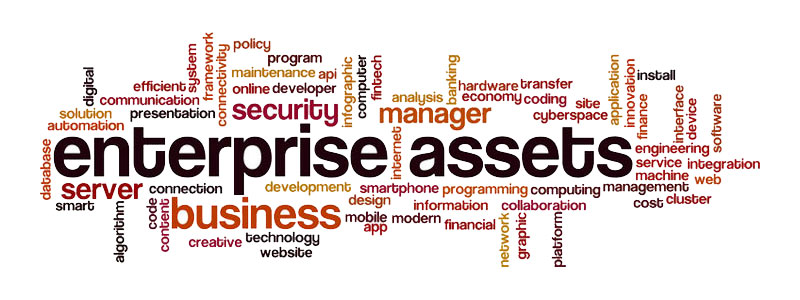 Assets
Assets
Enterprise assets provide an effective strategy for sharing data and communicating with multiple applications, as well as having access to other resources within the corporate Information Technology (IT) infrastructure. The enterprise environment contributes greatly to establishing and enforcing corporate governance within an organization. Internal processes that may have stood-alone in the past can now be utilized by multiple applications, and become part of an organization's internal workflow. Additionally, the sharing and updating of data within interconnected enterprise applications, provides a means to coordinate business operations, and promotes consistency throughout the corporate enterprise environment.
Enterprise portals are another asset ansd means to provide enhanced services for advancing organizations. Enterprise portals support integrated business solutions to enable and/or better manage extended business operations, as well as support diverse workforces. Today, many organizations are pushing their existing portal environments beyond original design capabilities, which further restrains existing corporate infrastructures. Enterprise Portals on the other hand, provide the flexibility to define new business rules and processes to successfully accomplish extended operations for support of future business growth.

